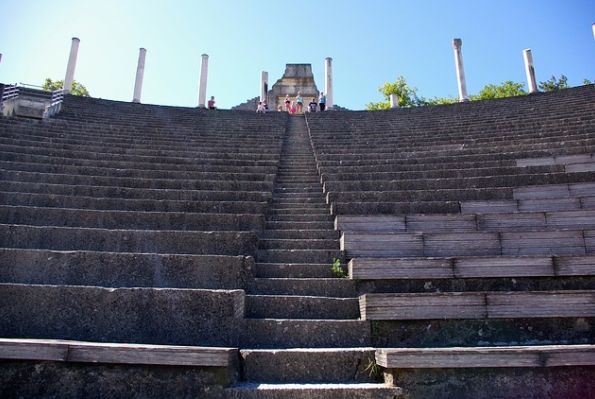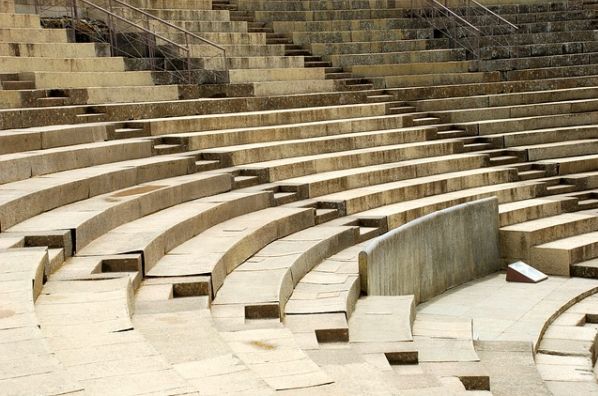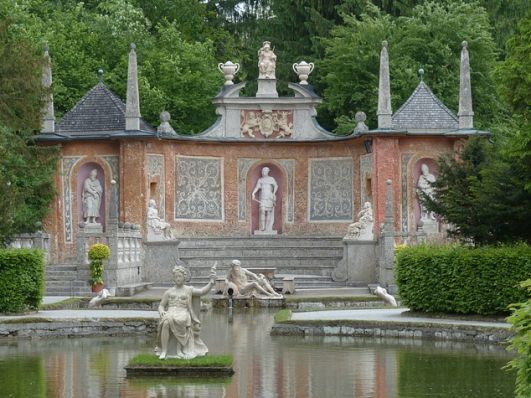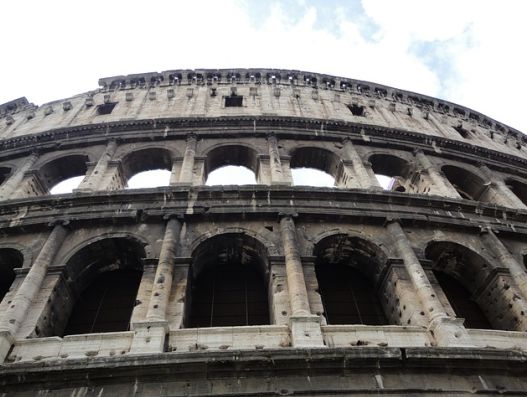Roman Theater – Construction, Concept and Evolution
Contents
What is the Roman Theater?
The Western theater could be developed and expanded under the influence of the Roman theater. Thus, the Roman historian Titus Livy wrote that the first experimental theater of the Romans took place in the fourth century B.C., with the staging of Etruscan actors. Beacham argues that they had been familiar with pretheatrical practices for some time before contact with the theater itself.
Thus, the theater of ancient Rome was a thriving and diverse art form, extending from the festival workings of street theater, dancing sometimes in the nude and in acrobatics, to the staging of Plautus’ broadly engaging situation comedies, to the high style, verbally elaborate tragedies of Seneca.
Although Rome had a native tradition of performance, the culture of Roman Hellenization in the third century BCE had a profound and energizing effect on Roman theater and encouraged the development of Latin literature of the highest quality for the stage. Thus, the only surviving Roman tragedies are in fact the plays of any kind of the Roman Empire, which are ten dramas, nine of them attributed to Lucius Annaeus Seneca (4 BCE-65 CE), Stoic philosopher and tutor of Nero.
Understanding the Roman Theater
Theater was a spectacle that was an integral part of life in the Roman world. Some forms of this spectacle had to do with triumphal processions, aristocratic and public funerals, banquets, for example, which took as their backdrop the city itself.
Other similar spectacles took place in buildings specially designed for spectators: theaters for plays and other stage shows, amphitheaters for gladiatorial combats and wild beasts, stadiums for athletic competitions, and circuses for chariot races. As a whole, this dominant culture of spectacle served as a vehicle for advertisement by the sociopolitical elite and as a means of reinforcing shared values and community institutions.
According to the ancient historian Titus Livy, the first theatrical activity in Rome took the form of dances with musical accompaniment, introduced to the city by the Etruscans in 364 BC. The literary record also indicates that Atellanae, a form of native Italic farce were performed in Rome at a relatively early date. In 240 B.C., complete, scripted plays were introduced to Rome by the playwright Livius Andronicus, a native of the Greek city of Tarentum in southern Italy. The earliest Latin plays to survive intact are the comedies of Plautus (active ca. 205-184 B.C.), which were mainly adaptations of Greek new comedy.
Latin tragedy also flourished during the second century B.C. While some examples of the genre deal with stories from Greek myth, others were referenced to famous episodes from Roman history. After the second century B.C., the composition of tragedy and comedy declined in Rome. During the imperial period, the most popular forms of theatrical entertainment were debauched comic productions with sensational and sexually suggestive plots and pantomimes that were performances by dancers alone with choral accompaniment, generally recreating the tragic of myths.
How did the Roman Theater develop?
The main occasions for dramatic performances in the Roman world were annual religious festivals, or ludi, organized by elected magistrates and financed from the state treasury. Dedications to temples, military triumphs and aristocratic funerals also provided opportunities for stage spectacles. Until 55 B.C., there was no permanent theater in the city of Rome, and stages were arranged in temporary, wooden structures.
Since theater in Rome was not only related to the staging of life situations of this civilization, but also to the characteristics of the buildings in which these shows took place, it is important to highlight that with respect to the buildings, ancient sources agree in pointing out that the delay that often occurred in the construction of a permanent theater was due to active senatorial opposition, although the possible reasons for this resistance are believed to be concern for Roman morality, fear of popular sedition, competition among the elites, which are still a subject of debate.
Literary accounts of temporary theaters indicate that they could be quite elaborate. Hence, the best documented extant of a theater is the one built by the magistrate M. Aemilius Scaurus in 58 B.C., which Pliny reports to have had a stage building consisting of three stories of columns and adorned with bronze statues.
On the other hand, Roman theater borrowed many of its ideas from Greek theater but had less philosophical pacing and seemed more like drama: acrobatics, gladiators, jugglers, athletics, chariot races, naumachia (naval battles), boxing, venationes (animal fights) entertainments that tended to be grandiose, sentimental, fun with actors/artists who were called “histriones”.
In this sense, the three main influences on Roman theater were:
- Greek drama.
- The Etruscan influence that emphasized circus elements.
- The Fabula Atellana – the Atellan farce (the Atella was near Naples).
- It may have influenced the commedia dell’arte in:
- Short improvised farces, with common characters, similar costumes and masks, based on domestic life or mythology.Burlesque, parody – during the
- First century A.C.
- The Bucco: braggart
- The boisterous Pappas: old fool
- The Dossenus: drunken hunchback, swindler
- The drama which flourished under the Republic but declined into varied entertainment under the Empire
What is the main legacy of the Roman theater?
The legacy that could be considered the most important of the Roman theater were its forms, they are:
Roman Tragedy
It developed during the first century A.D. because Emperor Nero was passionate about theater. Nero himself performed theater reciting and singing comedies and tragedies with theatrical costumes and masks, not only in the palace but also in theaters. Thus, the writer Seneca wrote new tragedies especially for Nero. However, from the 1st century onwards classical tragedy had been replaced by another genre of spectacle, pantomime, which together with mime dominated the imperial stage.
Nevertheless, figurative sources such as sculptures, bas-reliefs, mosaics, portray characters of tragedy. Thus, these findings allow us to confirm that tragic plots were used, staged by pantomimes and not only by tragedy actors per se.
The Roman Comedy
Comedy was named after the actors, for example that of Plautus and Terence, also in the 1st century AD. This theater was performed with masks and comic costumes. However, the mime did not use masks to represent the funny farce, because the mime itself was not enough. Later, this form of theater was replaced by mime and pantomime.
The Citarodia
This form of theater was made by contests and the performers sang pieces of different genres in a theatrical way accompanied by the zither. Nero also took part in them and tragedy themes were also sung. Likewise, this custom was extended to composing music by taking fragments taken from classical tragedies and singing them using the zither. Also many of the singers worked as pantomimes.
The Atelana
It was an Atellan farce of Atella’s ascos, staged in Rome in the 2nd century B.C. They had a satirical tone, with a mixture of verse and prose interspersed in a rustic form, with fixed masque. They bore the names of: Dossennus, Maccus, Bucco, Manducus, Pappus. They were used over time just like the satirical dramas of the tragedies. Similarly, the female role was played by free male actors who hid their identity by wearing masks.
In the same way, the actors overcame the temptation to criticize the powerful, with tragic consequences, as in the case of the actor who criticized Caligula and was burned alive in the amphitheater by order of the emperor. During the Roman Empire it was very successful because it was captured in several statues and terracotta masks that represent this particular type of the atelana, coming from the Roman Empire.
The Thetimimos
They were aquatic choreographic shows named after the goddess of the sea Thetis. Thus the orchestra pit of the theaters were filled with water and shows of silent mimes in female nude exhibition were staged.
The Naumachias
These were shows as bloody as gladiator fights but with numerous men with vessels, who died in the fights. They were very similar to troop fights, but in two small armies without previous training.
Likewise, they were staged on the banks of rivers in the beginning and then changed to gigantic pools in amphitheaters or coliseums. Likewise, it leaves one to wonder how they change the scenery from one moment to the next from terrestrial to aquatic, which seemed to be one of the attractions. For the stage was mostly set for hunting and gladiatorial combat.
The Amphitheater and the Coliseum
In these scenarios, different types of shows were performed, but the most outstanding was the gladiatorial fight. These gladiators were prisoners condemned for serious crimes, prisoners of war and slaves punished by their owners. But they could also be free men with no other means to live. By staging these fights they were given the opportunity to obtain freedom, fame and sometimes an important economic position.
Thus, at the time of the fight, if one of the two wrestlers fell wounded, he would raise his hand to ask for grace. Then, the emperor or the magistrate who had control of the games, decided according to the opinion of the public that was going to shout, cheer and bet on his gladiator. Thus, if he had fought well, the crowd would give a thumbs up but, if they gave a thumbs down, the victor killed the vanquished and received the palm of victory.
Who were the main representatives?
In Drama, it is believed that Livius Andronicus (240 – 204 B.C.), wrote, translated and adapted comedies and tragedies, of the first important plays in Latin. Little is known, but he seems to have been better in tragedy. Likewise, Gnaeus Naevius (270-201 B.C.) excelled in comedy, and both helped to “Romanize” drama by introducing Roman statements into the Greek originals and using Roman stories, making comedy and tragedy follow different paths.
For his part, Plautus exclusively cultivated the fabula palliata. Therefore, he took the models of the Greek New Comedy and most of his plays are about already known themes, such as: the motif of the double that generates confusion, the rivalry between a young man and an old man to conquer a girl, the generational differences between parents and children, the lost children and their later recognition.
Likewise, this playwright had an undoubted merit in the use of language, praised for its richness and vivacity by other authors such as Varrón and Cicero. Therefore, in his works we find all the vocabulary of the Rome of that time, such as diminutives, exaggerations, redundancies, Greek words. Using different levels in the language, from the coarse insult to the artificial parody, from the lyrical accent to obscenity. Therefore, his writings have great comic force, as he was considered a man of the people who wrote for the general public, hence his work has a popular character that gives it originality.
For his part, Terence (190 – 159 B.C.) of African origin, lived between the Second and Third Punic War. He arrived in Rome as a slave but regained his freedom, and was a friend of Scipio, another young man of the same Hellenizing generation with which he constituted the Greek culture in Rome.
It is said that he wrote six comedies called: Andria, Hecyra, Heautontimorumenos (“He who torments himself”), Eunuchus, Phormio and Adelphoe. In the same way, the prologues of the comedies in which Terence defends himself from the attacks of the critics and seeks to attract the attention of the public that did not have a positive attitude of his works are preserved. Since, they were works that did not convince neither the general public nor the literati, since the latter reproached him for the contaminatio (combination of two Greek pieces) of his works, plagiarism and other collaborations in their composition.




